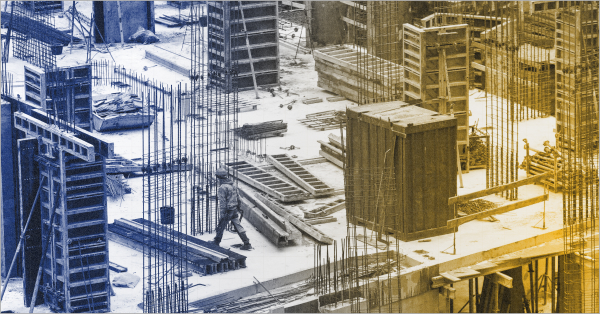Buying a home is one of the most important financial and sentimental investments of an Indian family. A home is not a mere property; rather, it’s a cherished combination of savings, ambitions, and dreams. However, consider the possibility of a fire, flood or burglary taking it all away. Sounds disastrous, isn’t it? Here is where home insurance comes in as a safety net.
Irrespective of the increasing awareness, the Insurance Regulatory and Development Authority of India (IRDAI) estimates that less than 1% of households are insured in India. Home insurance is not a luxury in a country like India, which experiences natural disasters and urban hazards quite regularly.
This blog will discuss the ins and outs of home insurance in India: what it is, why you need it, and how to make the right decision in terms of your home and family.
Here we go!
Home Insurance: A Brief Overview
Home insurance, sometimes called property insurance or householder insurance, is a financial product that covers damage or loss to your home and its contents because of sudden and unpredictable events.
These events can include:
- Natural disasters (earthquakes, floods, cyclones)
- Explosions and fire
- Theft and burglary
- Riot and vandalism
- Accidental damage
Basically, it saves the homeowners from substantial financial loss by shifting the risk to the insurance provider. Personal liability coverage is also included in some of the home insurance policies, which compensates for the injury to a third party in the insured premises.
Key Features of Home Insurance in India
Home insurance plans offered in India come with a range of features designed to suit various types of homeowners and tenants. Some of the key highlights include:
- Customisable coverage: You can choose between building-only, contents-only, or a comprehensive plan that includes both.
- Long policy terms: IRDAI permits long-term home insurance policies of up to 10 years or more.
- New-for-old basis: Many insurers offer replacement for damaged contents with new ones of equivalent value.
- Add-on covers: You can extend the policy to cover valuable jewellery, artwork, domestic workers, and even loss of rent.
- Affordable premiums: Premiums start at ₹1,000–₹2,000 per year for a ₹20–25 lakh sum insured, making it cost-effective even for middle-income families.
- No-claim discounts: Some insurers offer discounts if you haven’t filed a claim in the past policy year.
These features make home insurance flexible, cost-efficient, and adaptable to the Indian lifestyle.
Types of Home Insurance Policies in India
Indian insurance providers offer different types of home insurance policies to suit the diverse needs of the potential policyholders:
a. Building Insurance
Includes walls, roof, ceiling, fixtures, floors, garages and other such physical structures of your home. These policies are recommended for homeowners.
b. Contents Insurance
Covers your assets within the house such as furniture, appliances, gadgets, and other valuables. This type of policy is perfect where the tenant or the homeowner looks for extra protection.
c. Comprehensive Home Insurance
Provides both building and content coverage. It is the most comprehensive type of protection and it is suitable for homeowners who live in their own houses.
d. Tenant’s Insurance
This policy is designed to cover personal property and liability of the renter. However, the coverage is not available for the structure.
e. Landlord’s Insurance
This type of home insurance is more suitable for homeowners who rent their properties. Such a policy provides coverage for building structure, loss of rent, and legal liability due to tenant-related risks
Each of the policies above policy can be customisable with riders and add-ons according to the type of home you own- be it a bungalow, apartment, villa or a rented house
What Does Home Insurance Typically Cover?
While coverage varies from one insurance provider to another, most standard policies include protection against:
A.Natural Disasters
- Earthquakes, landslides, floods, cyclones, storms, tsunamis
B. Fire and Allied Perils
- Fires due to gas leaks, electrical faults, lightning or external causes
C. Burglary & Theft
- Theft of insured items like electronics, cash, jewellery (if declared) or furniture
D. Accidental Damage
- Damage from short-circuits, burst water tanks, gas explosions or falling objects
E. Alternative Accommodation
- Provides reimbursement for temporary stay if the house becomes uninhabitable due to covered perils
F. Personal Liability
- Covers third-party injury or damage caused within the insured premises.
Many insurers also offer optional covers for:
- Terrorism-related damage
- Loss of rent
- Breakage of glass fixtures
- Damage to domestic help belongings
What is Not Covered in Home Insurance? (Exclusions)
Exclusions can be regarded as the blind spots in any insurance policy. The most common home insurance policy exclusions are:
- Damage due to wear and tear, aging, or neglect
- Intentional or wilful destruction of property
- Damage caused by war, rebellion, or nuclear activity
- Loss of items like cash, documents, bonds, or antiques (unless specifically insured)
- Illegal constructions or modifications not disclosed to the insurer
- Damage due to pet actions or vermin infestations
It is as important to understand the exclusions as it is to know the coverage areas. While purchasing an insurance policy, always read the policy document carefully and seek clarification on areas of doubt with the insurance provider.
Benefits of Buying Home Insurance in India
Here’s why investing in home insurance is a wise decision for Indian homeowners and tenants:
a)Safeguards Your Investment
A house is often a person’s largest financial asset. Insurance helps protect that asset from catastrophic events.
b)Protects Valuables
Whether it’s your ₹1 lakh smart TV or inherited jewellery, content insurance ensures you’re not paying from your pocket to replace them.
c)Covers Natural Disasters
With India being highly vulnerable to floods, earthquakes, and cyclones, a home insurance policy can offer relief and recovery after such incidents.
d)Offers Liability Protection
If someone gets injured in your home and sues you, personal liability cover can save you from hefty legal expenses.
e)Stress-Free Living
Knowing that you are financially covered allows for peace of mind, especially during the monsoon season or if you travel often.
f)Low Premium, High Value
For just a few thousand rupees a year, you can insure a property worth lakhs or crores. It’s low-cost, high-return protection.
How to Choose the Right Home Insurance Policy
Choosing the right policy means balancing affordability with adequate coverage. Here’s how to decide:
1. Evaluate Your Home’s Value
Estimate the rebuilding cost, not the market value. For example, if construction cost is ₹2,000/sq.ft. and your house is 1,000 sq.ft., the sum insured should be ₹20 lakh.
2. Take Inventory of Contents
List appliances, electronics, furniture, valuables, and estimate their worth. This helps you choose the right content cover amount.
3. Compare Insurers
Look at factors such as:
- Claim settlement ratio (above 90% is ideal)
- Customer reviews
- Network of surveyors
- Add-on options and exclusions
4. Check Coverage and Deductibles
Know what’s covered, what’s not, and how much you need to pay as deductible at the time of claim.
5. Look for Discounts
Some insurers offer discounts for long-term policies, security devices, or if bundled with car/health insurance.
How to Buy Home Insurance in India
Buying a home insurance policy is easier than ever before. Here’s how you can do it:
A.Online
Visit websites of prominent insurance providers or use aggregators like Bimakavach. Fill in your details, compare quotes, make payment, and get instant coverage that suits your unique needs.
B.Offline
Visit the nearest branch or contact a certified insurance agent. This route is more personalised and better suited for complex needs.
C.Through Banks or Housing Societies
Many banks tie home insurance to home loans, offering competitive premiums and auto-renewals. Housing societies can also collaborate with insurers for group discounts.
Whichever method you choose, ensure your policy is backed by IRDAI-registered companies- for reliability.
How to File a Home Insurance Claim
When disaster strikes, following the right claim procedure ensures faster and smoother settlement.
Step 1: Inform the Insurer Immediately
Call or log in to the insurer’s online portal or mobile app. Most have 24×7 claim intimation.
Step 2: Collect Evidence
Click clear photos or videos of the damage. Retain damaged items for inspection.
Step 3: Submit Documentation
Important documents you should submit include:
- Duly filled claim form
- FIR (in case of theft or malicious damage)
- Photos/videos
- Ownership proof and bills
- Repair estimates
Step 4: Surveyor Visit
The insurer will send a surveyor for damage assessment. Cooperate and clarify doubts.
Step 5: Claim Settlement
After evaluation, the insurer either reimburses or facilitates cashless settlement through partnered vendors.
Never delay claim filing; most policies require intimation within 24–48 hours of the incident.
Recent Trends in the Indian Home Insurance Market
- Rising Natural Disasters
The National Disaster Management Authority stated that India experienced more than 75 major disasters in the last decade alone. This has driven the demand for structural and flood insurance.
- Technology Integration
AI-driven claims, smartphone-based inspection apps and IoT-based home security are the new norms.
- Urbanisation and Property Value Rise
Due to the increased property prices in Tier-1 and Tier-2 cities in India, an increasing number of Indians are now opting to invest in long-term home insurance cover.
- Bundled Financial Products
Home loans, EMIs, and smart home devices are also bundled with home insurance offered by banks now. These can offer greater convenience to the customers.
Final Thoughts:
Your home is not just a structure, it is the refuge and safe heaven for your family. However, in a nation that is often vulnerable to natural and man-made disasters, it is a dangerous gamble to leave your home uninsured. Home insurance in India is still quite affordable, accessible and can be tailored to meet your specific requirements. Whether you are a homeowner, tenant or a landlord, the right home insurance policy will provide you with absolute peace of mind and financial security when the unforeseen happens.
It is high time to act upon it and get a home insurance policy, if you have not got one yet. Don’t let a disaster be the reason why you realise the value of insurance. Protect your home, protect your mind.








